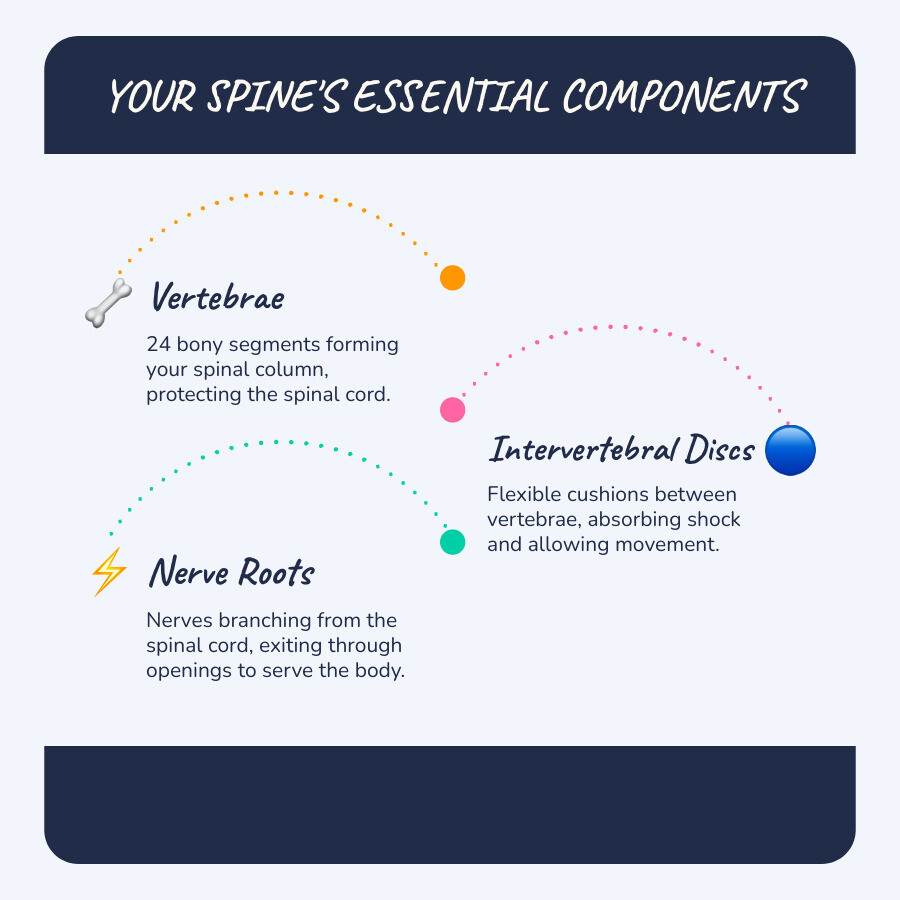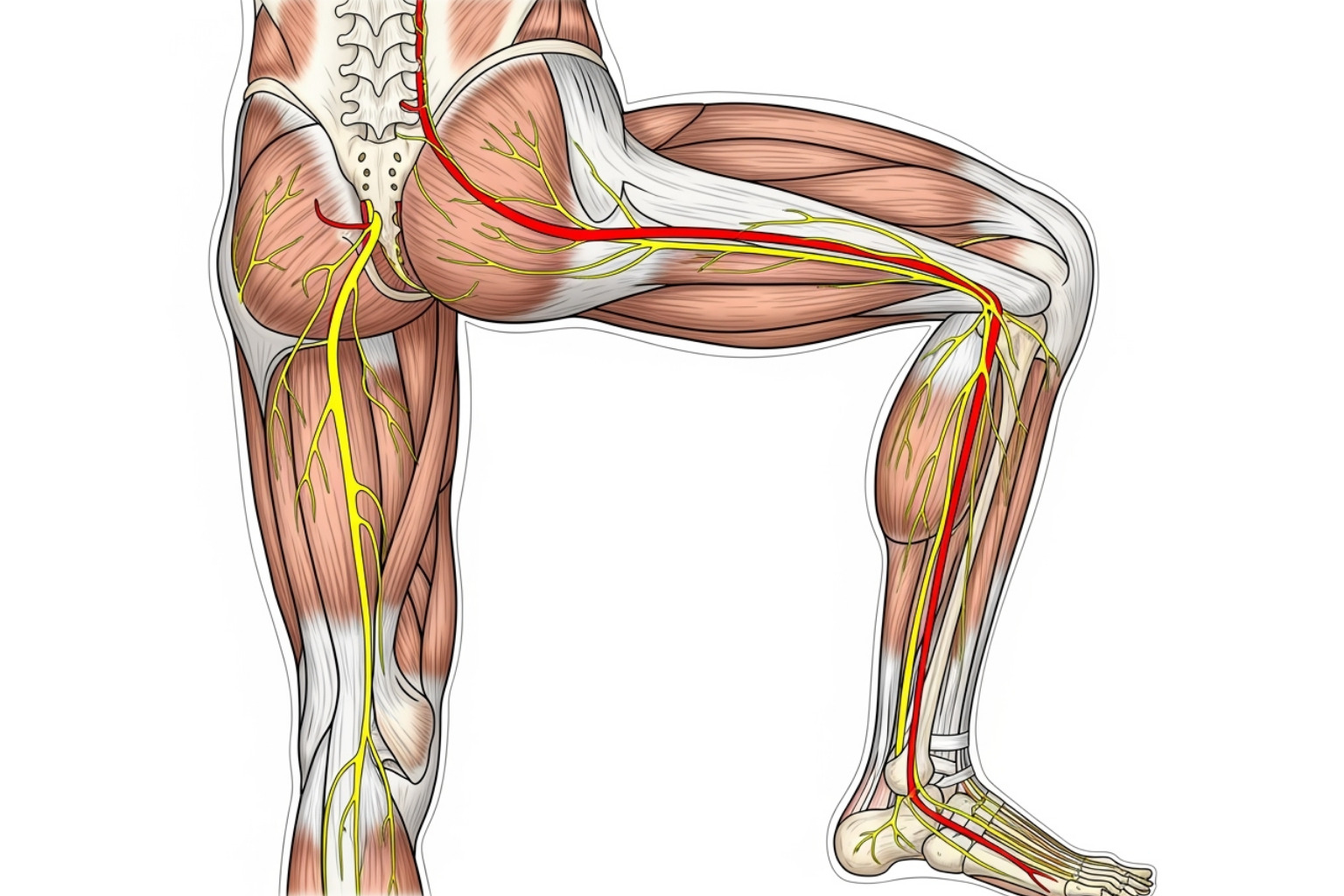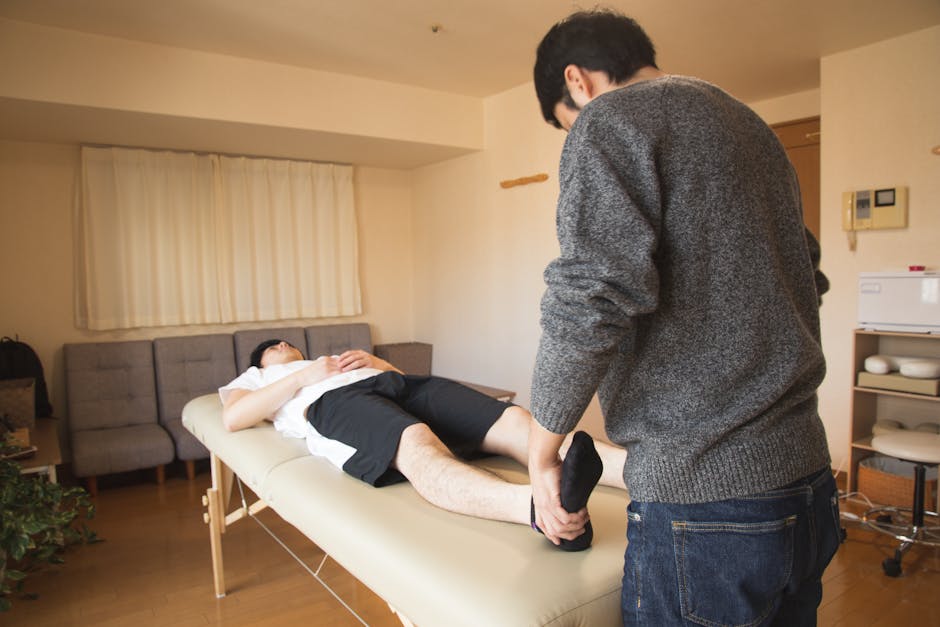Understanding a Pinched Nerve in Your Back
A pinched nerve in back occurs when surrounding tissues—like bones, discs, or muscles—press on a nerve root, disrupting its signals. This compression is most common in the lower back (lumbar spine) and neck (cervical spine).
Quick Answer: What You Need to Know About a Pinched Nerve in Back
- What it is: Nerve compression from surrounding tissues pressing on a nerve root.
- Common causes: Herniated discs, bone spurs, spinal stenosis, injury, or repetitive motion.
- Key symptoms: Sharp or burning pain, numbness, tingling ("pins and needles"), muscle weakness, and pain radiating down the leg (sciatica).
- When to see a doctor: If pain is severe, lasts more than a few weeks, or you have sudden muscle weakness or loss of bladder/bowel control.
- Treatment options: Rest, ice/heat therapy, physical therapy, medications, and in severe cases, surgery.
- Recovery time: Most people improve within days to weeks with conservative care.
Back pain is a leading health issue, with research suggesting up to 80% of adults will experience it. A pinched nerve in back often causes radiating pain that travels into the hip, buttock, or leg—a condition known as sciatica. You might also feel tingling, numbness, or weakness that makes daily activities difficult.
Understanding the causes and recognizing the symptoms are key to a swift recovery. The good news is that most people recover fully with conservative treatments and do not need surgery.
I'm Tony Enrico, and through my work with Neuropasil, I've dedicated myself to helping people find relief from nerve pain and muscle discomfort. Our mission is to provide natural, effective solutions that restore comfort and help you reclaim the activities you love.

Understanding the Causes and Symptoms of a Pinched Nerve
When a nerve root branching off your spinal cord is squeezed or irritated, doctors call it radiculopathy. This compression disrupts nerve signals, leading to pain, tingling, and weakness.
What is a Pinched Nerve?
A pinched nerve occurs when tissues like bones (often bone spurs), cartilage (from a bulging or herniated disc), muscles, or tendons press on a nerve. This pressure interferes with the nerve's ability to send messages between the brain and body, causing pain, numbness, or weakness.
Your doctor might diagnose this as cervical radiculopathy (neck) or lumbar radiculopathy (lower back). The underlying problem is the same: a nerve under pressure. To learn more about how nerves are affected, you can read about decoding nerve pain.
Common Causes of a pinched nerve in the back
Several issues can lead to a pinched nerve in back:
- Herniated or Bulging Discs: The soft inner material of a spinal disc can push through its tough exterior (herniate) or push outward without rupturing (bulge), pressing on a nerve.
- Spinal Stenosis: This is a narrowing of the spinal canal, which can squeeze the spinal cord and nerve roots. It often develops with age.
- Bone Spurs (Osteophytes): As the spine responds to arthritis or disc degeneration, it can form extra bone growths that compress nearby nerves. Interestingly, the American Academy of Orthopaedic Surgeons (AAOS) notes that nearly half of middle-aged and older adults have worn discs and pinched nerves without any symptoms.
- Injury or Trauma: Lifting heavy objects improperly, falls, car accidents, or awkward twisting movements can all lead to nerve compression.
- Repetitive Motions: Poor posture or improper lifting techniques repeated over time can cause strain and lead to a pinched nerve.
- Other Conditions: Spondylolisthesis (a vertebra slipping forward), rheumatoid arthritis, diabetes, and obesity can also increase your risk.
For a visual guide to your spine's structure, the Anatomy of the Spine from AANS is an excellent resource.
Key Symptoms to Watch For

Symptoms of a pinched nerve in back depend on which nerve is affected. Here are the common signs:
- Sharp, Aching, or Burning Pain: The pain can be a dull ache or a sudden, electric shock-like sensation. It often radiates from the back to other areas.
- Sciatica: This is a classic example of radiating pain. When nerve roots in the lower back are compressed, pain travels along the sciatic nerve through the hip, buttock, and down the leg, usually on one side. Learn more in our guide on Sciatica Symptoms 101.
- Numbness or Decreased Sensation: You might lose feeling in the area supplied by the nerve, similar to a limb "falling asleep."
- Tingling or "Pins and Needles": This prickling sensation (paresthesia) is a clear sign of nerve irritation.
- Muscle Weakness: If motor signals are disrupted, you may find it difficult to lift objects, walk, or grip things firmly.
- Symptoms Worsen at Night: Lying still can sometimes allow inflammation to build, or certain sleeping positions may increase pressure on the nerve.
If these symptoms persist or interfere with your daily life, it's time to consult a healthcare provider.
Diagnosis and When to Seek Medical Help for a Pinched Nerve in Back
Getting a proper diagnosis is the first step toward effective treatment for a pinched nerve in back. A healthcare professional can identify the source of the problem and guide you toward recovery.
How is a pinched nerve in the back diagnosed?
Diagnosing a pinched nerve in back involves several steps to pinpoint the cause:
Physical Exam and Medical History: Your doctor will begin by reviewing your symptoms and medical history. They will then perform a physical exam, checking your reflexes, muscle strength, and sensation. You may be asked to perform simple movements, like walking on your heels or toes or raising your legs, to help identify the affected nerve.
Imaging Tests: If significant nerve compression is suspected, imaging tests are used to see inside your spine. X-rays can show bone spurs and alignment issues. CT scans provide more detail, but an MRI is often the preferred test as it excels at showing soft tissues like herniated discs and inflamed nerves.
Nerve Function Tests: To measure how well your nerves are working, your doctor might order an electromyography (EMG), which measures electrical activity in your muscles. A nerve conduction study, often done with an EMG, measures how quickly electrical signals travel along a nerve. These tests can confirm nerve damage and its severity. You can find more details on nerve conduction studies from Johns Hopkins Medicine.
When to See a Doctor
While many mild cases of a pinched nerve in back resolve with home care, certain symptoms require professional medical attention. The longer a nerve is compressed, the higher the risk of permanent damage.
See a doctor if:
- Your symptoms persist for several days without improvement.
- The pain is severe, getting worse, or disrupting your sleep and daily activities.
- You experience sudden muscle weakness, such as difficulty lifting your foot (foot drop).
Seek emergency medical care immediately if you experience loss of bladder or bowel control. This can be a sign of Cauda Equina Syndrome, a serious condition requiring emergency surgery to prevent permanent paralysis and disability. Other signs include numbness in the groin or buttocks area and significant leg weakness. Do not attempt to treat these symptoms at home.
Effective Treatment and Pain Relief Strategies
Once a pinched nerve in back is diagnosed, the goal is to relieve pressure, reduce pain, and restore function. Fortunately, most people find relief with conservative treatments, and surgery is rarely the first option.
At-Home Remedies and Lifestyle Adjustments
For mild to moderate cases, relief often starts at home with these simple strategies:
- Rest and Activity Modification: Avoid activities that worsen your pain, but don't stay in bed. Gentle movement is better than complete rest. The goal is to give the irritated nerve a break.
- Ice and Heat Therapy: In the first 48 hours, apply an ice pack for 15-20 minutes at a time to reduce inflammation. Afterward, you can switch to a heating pad to relax tight muscles and improve blood flow.
- Improving Your Posture: Sit and stand with your shoulders back and use lumbar support in your chair. Good posture reduces pressure on your spine and nerves.
-
Gentle Stretching: Once the initial sharp pain subsides, gentle stretching can help. Stop if any stretch causes more pain. Here are three simple, safe stretches for lower back relief:
- Cat-Cow Stretch: On your hands and knees, alternate between arching your back up and letting your belly drop toward the floor.
- Pelvic Tilt: Lie on your back with knees bent. Gently flatten your lower back against the floor by tightening your abdominal muscles.
- Knee-to-Chest Stretch: Lie on your back and gently pull one knee toward your chest, holding for 20-30 seconds. Switch legs.
For more ideas, explore our guide on how to soothe back pain naturally.
Medical Treatment Options
If home care isn't enough, your doctor may recommend other treatments.

- Physical Therapy: This is a cornerstone of treatment. A physical therapist will guide you through exercises to strengthen your core, improve flexibility, and correct posture, helping to prevent future problems.
- Medications: Over-the-counter nonsteroidal anti-inflammatory drugs (NSAIDs) can reduce both pain and inflammation. For more severe symptoms, a doctor might prescribe stronger medications or muscle relaxants.
- Corticosteroid Injections: These powerful anti-inflammatory drugs are injected near the compressed nerve to provide significant, though often temporary, pain relief. In some cases, medications that specifically target nerve pain may also be prescribed.
- Surgery: This is a last resort, reserved for cases where conservative treatments fail or when there is progressive muscle weakness or loss of bladder/bowel control. Common procedures include discectomy (removing part of a disc) or laminectomy (removing bone to create more space for the nerve).
For more on treatment, see our guide Freedom From The Squeeze: How To Relieve A Pinched Nerve.
Prevention and Long-Term Management
Preventing a pinched nerve in back is the best strategy. Whether you've had one before or want to avoid your first, you have significant control over your spinal health through thoughtful daily habits.
How to Prevent a Pinched Nerve
Think of these strategies as an investment in your future comfort and mobility:
- Maintain a Healthy Weight: Excess weight, especially around the midsection, puts constant strain on your spine. Losing even a small amount of weight can provide significant relief.
- Exercise Regularly: Consistent movement—like walking, swimming, or cycling—keeps your muscles strong and your joints flexible.
- Strengthen Your Core: Strong abdominal and back muscles act as a natural brace for your spine, taking pressure off your discs. Planks, bridges, and certain yoga poses are excellent for building core stability.
- Use Proper Lifting Techniques: Always bend at your knees, not your waist. Keep your back straight, hold the object close to your body, and let your strong leg muscles do the work.
- Improve Your Ergonomics: Set up your workspace to support your body. Your screen should be at eye level, your chair should support your lower back, and your feet should be flat on the floor.

Daily Habits for a Healthy Back
Small, consistent habits can make a huge difference in preventing back problems:
- Take Frequent Breaks from Sitting: Stand up, stretch, and move around every 30 to 60 minutes. This gives your spine a chance to decompress.
- Avoid Prolonged Static Positions: Shift your position regularly whether you are sitting or standing. Avoid crossing your legs for long periods.
- Incorporate Flexibility Exercises: Gentle stretching, yoga, or Pilates can maintain flexibility and reduce muscle tension that contributes to nerve compression. A few minutes of movement each day pays dividends in comfort. You can find helpful stretching exercises for those who sit all day to add to your routine.
Preventing a pinched nerve in back is about awareness and making better choices most of the time. Your back will thank you for every small improvement you make.
Frequently Asked Questions about a Pinched Nerve in the Back
Dealing with back and nerve pain can be confusing. Here are answers to some of the most common questions about a pinched nerve in back.
How long does it take for a pinched nerve in the back to heal?
Recovery time varies. For a mild strain, you might feel better in a few days to a couple of weeks with self-care like rest and ice/heat therapy.
When the cause is more significant, like a herniated disc, healing can take several weeks to months. Physical therapy and other medical treatments are often necessary to support recovery.
It's critical to address symptoms early. Prolonged nerve compression can lead to chronic pain or permanent nerve damage. Early treatment improves the chances of a full recovery and prevents long-term complications.
Can a chiropractor help a pinched nerve in the back?
Yes, chiropractic care can be effective for a pinched nerve in back. Chiropractors use spinal adjustments to correct misalignments that may be contributing to nerve compression, which can relieve pressure and reduce pain.
Many chiropractors also incorporate therapeutic exercises and lifestyle advice into their treatment plans. It is a widely recognized non-surgical approach. Always work with a qualified, licensed chiropractor who performs a thorough evaluation and will refer you to other medical providers if necessary.
What does a pinched nerve in the back feel like?
The sensation of a pinched nerve in back can vary, but it's almost always disruptive. Common symptoms include:
- Pain: This can range from a dull, constant ache to a sharp, shooting, or burning pain. When it travels down the leg, it's known as sciatica.
- Tingling and "Pins and Needles": A persistent prickly feeling in your leg or foot.
- Numbness: A loss of sensation or a feeling that a part of your body has "fallen asleep."
- Muscle Weakness: Difficulty with tasks like walking, lifting your foot, or gripping objects.
Many people find their symptoms feel worse at night, making it difficult to sleep. These sensations are your body's warning signs that something needs attention.
Conclusion
If you're struggling with a pinched nerve in back, know that you are not alone and that effective relief is available. This condition, caused by pressure on a nerve root from issues like herniated discs or bone spurs, often results in radiating pain, tingling, and weakness.
We've covered how a proper diagnosis is key and why you must seek immediate medical help for severe symptoms like sudden weakness or loss of bladder control. The good news is that most people recover with conservative treatments, including rest, physical therapy, and lifestyle adjustments.
Prevention is your best defense. Maintaining a healthy weight, exercising, using proper lifting techniques, and taking breaks from sitting are all crucial investments in your spinal health.
Early intervention is critical. The sooner you address your symptoms, the better your chances are for a full and speedy recovery. For many dealing with the discomfort of a pinched nerve in back, sciatica, or other nerve-related issues, a topical solution can be a valuable part of their pain management plan.
Our Neuropasil creams are formulated with natural ingredients like Aloe, Urea, and Menthol to provide fast-acting, targeted comfort. Customers use Neuropasil to find relief from a wide range of conditions, from neuropathy and fibromyalgia to everyday muscle aches and joint pain, helping them get back to the activities they love.
If you're interested in how topical solutions can aid your recovery, we invite you to read The Complete Guide to Nerve Pain Relief Creams. A pinched nerve in back doesn't have to control your life. With the right knowledge and treatment, you can find your way back to comfort.
References
When researching a complex topic like a pinched nerve in back, we believe in the importance of drawing from credible, authoritative medical sources. Throughout this article, we've carefully referenced information from leading healthcare institutions and medical experts to ensure you're getting accurate, trustworthy guidance.
Our understanding of spinal anatomy and nerve compression comes from detailed resources provided by the American Academy of Neurological Surgeons (AANS), including their comprehensive overview of the Anatomy of the Spine and Peripheral Nervous System. When discussing serious conditions that require immediate medical attention, we referenced their information on Cauda Equina Syndrome, a rare but critical emergency.
The Mayo Clinic provided invaluable insights into the symptoms and causes of pinched nerves, as well as comprehensive information about diagnosis and treatment options. Their expertise helped us explain the various approaches to managing this condition.
For understanding radiculopathy and the technical aspects of nerve compression, we consulted resources from Cedars-Sinai on Pinched Nerve (Radiculopathies), the Cleveland Clinic's detailed guide on Pinched Nerve, and Harvard Health's practical advice on strategies and treatments for pain relief.
The American Academy of Orthopaedic Surgeons (AAOS) through their Orthoinfo platform provided excellent information about Cervical Radiculopathy (Pinched Nerve), which helped us understand how these conditions present in different areas of the spine.
We learned about diagnostic procedures, particularly Nerve Conduction Studies, from Hopkins Medicine. For information about disc-related issues, we referenced the National Center for Biotechnology Information (NCBI) study by Dydyk, A. M., et al. (2020) on Disc Herniation.
Practical advice about prevention and daily habits came from several sources, including the Cleveland Clinic's helpful guide on stretches for those who sit all day, and the University of Utah's recent article on what to do for a pinched nerve in your back.
Additional insights were drawn from UCHealth's overview of Pinched Nerve: Symptoms, Diagnosis, and Treatment, Verywell Health's detailed look at Pinched Nerve in Lower Back: Feeling and Pain Relief, Medical News Today's article on pinched nerve in the upper back, and MedicineNet's Pinched Nerve Overview.
For information about bone spurs and their role in nerve compression, we consulted the NHS guide on Osteophyte (bone spur). We also referenced insights from Biofreeze on Pinched Nerve Relief: Four Methods to Soothe Discomfort for their perspective on pain management approaches.
We're grateful to these trusted medical institutions and healthcare professionals for making reliable information accessible. Their expertise helps us provide you with the most accurate, up-to-date guidance on managing a pinched nerve in back and finding the relief you deserve.














